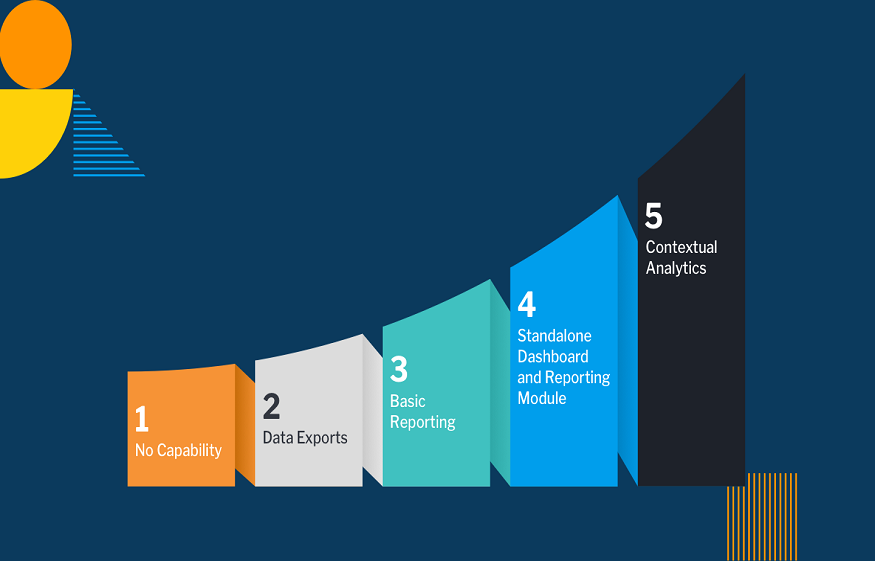If you talk about embedded analytics, it has turned out to be a crucial ingredient of modern business applications. It permits organizations to provide actionable insights and even data-driven decision-making abilities right away within their applications. However, choosing the right and effective embedded analytics tool can be a challenging task. Since there are endless options in the market, there are higher chances that you may get swayed by an ineffective option if you don’t explore all the options well.
To ensure that you make a good and effective choice, here are some points that you should keep in mind.
Understand the requirements you have
Make sure that you begin by clearly outlining your overall business’s specific requirements for embedded analytics. You have to pay attention to factors such as the type of data you require to analyse, the degree of customization required, integration capabilities, user access controls, and even scalability requirements. Of course, this way, you can be confident that you choose the option that is apt for your requirements.
Look for Customization Flexibility
You should hunt for a tool that provides you with a high degree of customization. Your embedded analytics solution or tool should definitely enable you to tailor the user interface, even data visualizations, and functionality to match the branding and user experience of your application. Indeed, no matter how good and excellent an analytic tool appears to be, if it cannot get you customised features, it may not be an apt one for you.
Check the overall Integration Capabilities.
Make sure that the embedded analytics type of tool you choose seamlessly integrates with your existing applications and even technology stack. Compatibility with diverse programming languages, frameworks, databases, and other tools your organization uses is necessary for a smooth type of implementation. After all, these integration capabilities can be advantageous for your business.
Proper Data Source Compatibility
Find out if the tool can link to a huge range of data sources, even encompassing databases, cloud services, APIs, and third-party applications. Such sort of flexibility ensures that you can access and even analyse the data you require. It is regardless of its overall location.
Check Scalability
It would be good if you consider the ability of the tool to handle increasing amounts of data and even users as your application grows. Scalability makes sure that your embedded analytics solution stays responsive and efficient even when the user base, as well as data volumes, expand. Of course, if there is a lack of scalability in the tool, you should not go for it.
Check User-Friendly Interface
The embedded analytics solution or tool should offer an intuitive and even user-friendly interface. Users, no matter whether they are internal employees or even external clients, should be in a position to navigate and interact with the analytics effortlessly, even if they lack technical know-how or expertise.
Proper Security and Data Privacy
When you are in a business, you cannot take the business data lightly. You have to be careful about the security measurements in place. Go for a tool that promises you robust and revolutionary security features. There should be provision of role-based access controls, encryption, and compliance with general data protection regulations.
Explore Data Visualization Options
It is your responsibility that before you finalize a tool, you evaluate the variety and quality of data visualization options that the tool offers. Interactive charts, dashboards, graphs, and reports should be visually appealing and even capable of conveying a proper level of insight effectively.
Performance and efficiency
Well, there is no doubt that slow-loading analytics can frustrate or disappoint users and diminish the worth of the embedded solution. Prioritize tools that deliver you efficient query performance and even swift loading times for data visualizations. Of course, these days, people don’t have patience, and if you have sluggishness, you may lose them.
Total Cost of Ownership or TCO
Well, you should pay attention to not just the upfront costs but also the long-term expenses linked to the embedded analytics solution. Such a thing encompasses licensing fees, proper maintenance costs, potential infrastructure upgrades, and even any sort of additional charges for features or even support.
Proper Support and Documentation
Then, you should look for a vendor that offers comprehensive documentation, tutorials, and customer support. A responsive support team can definitely assist in resolving diverse types of issues quickly and ensuring a smooth and productive implementation and constant usage.
Look for Future-Proofing
Then, you should go for a tool that aligns properly with your organization’s long-term goals and even technological roadmap. The embedded analytics solution must have the flexibility to adapt to altering business needs and overall advancements in technology.
Smooth Data Governance and Auditing
In case your industry demands strict data governance and auditing, it is your responsibility to ensure the tool provides you with features to track user interactions, even changes, and data access. It is mainly critical for regulatory compliance and even upkeeping data integrity.
Ensure Collaboration and Sharing
Well, you should search for tools that permit easy collaboration and sharing of insights. Users should be in a position to annotate, comment, and even share specific data points or visualizations with colleagues, endorsing effective teamwork.
Check Real-Time Data Processing
For applications that demand up-to-the-minute insights, make sure that you prioritize tools that support real-time data processing. It is one feature that is significant in scenarios where timely decisions based on the most contemporary data are essential.
Check Predictive Analytics and AI abilities
You should check if the tool offers predictive analytics and even AI capabilities. These features can simply help recognize trends, forecast future results, and ensure proactive insights that empower users to make effective and strategic moves.
Conclusion
To sum up, make sure that you go for the best-embedded analytics tools that get you the perfect outcomes. You have to keep in mind your organization’s aspirations and needs when you look for this tool. Just keep all the discussed things in mind, and you will finally choose a solution that is rewarding for your business. After all, the market is full of options in tools, and it depends on how well you research and compare the tools for your perfect fit.

